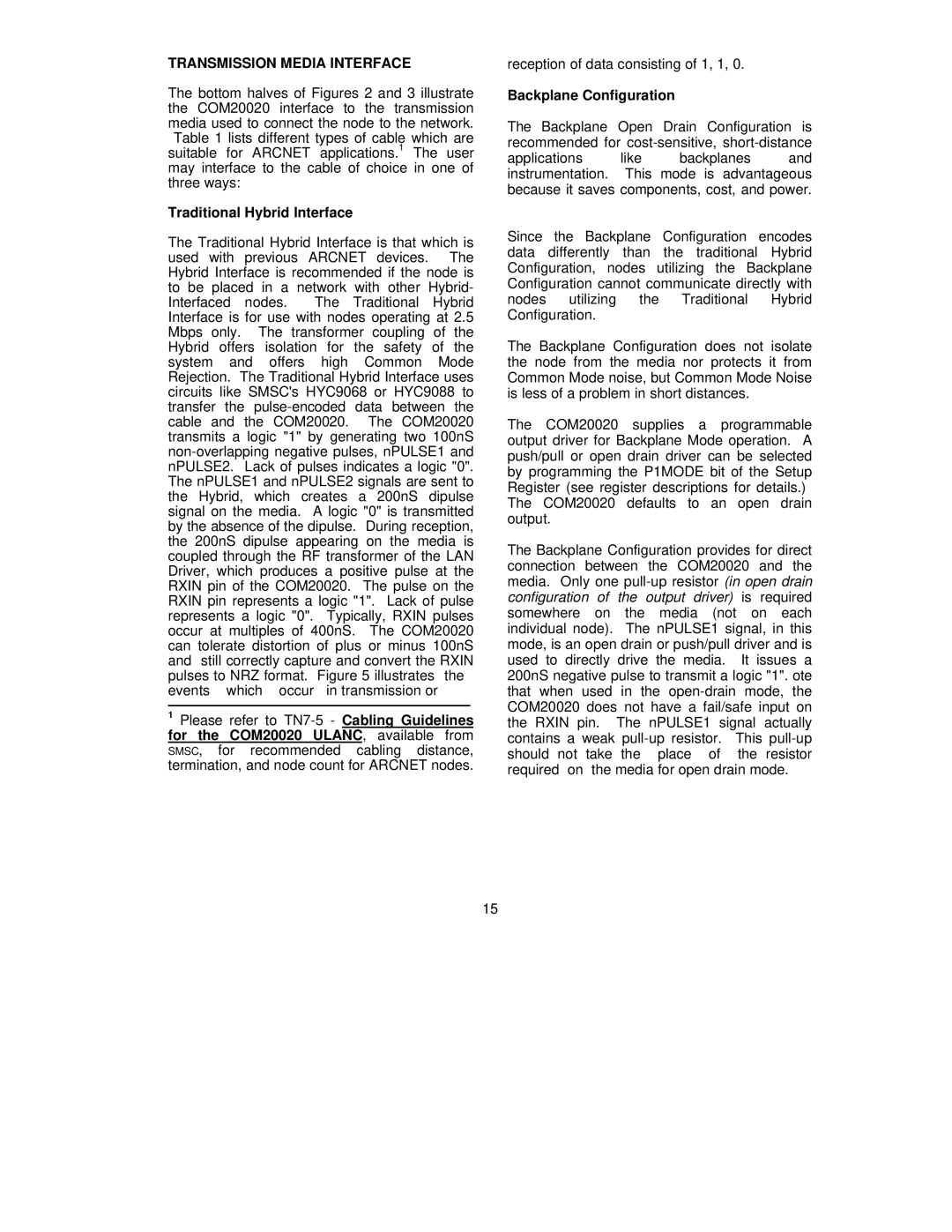TRANSMISSION MEDIA INTERFACE
The bottom halves of Figures 2 and 3 illustrate the COM20020 interface to the transmission media used to connect the node to the network. Table 1 lists different types of cable which are suitable for ARCNET applications.1 The user may interface to the cable of choice in one of three ways:
Traditional Hybrid Interface
reception of data consisting of 1, 1, 0.
Backplane Configuration
The Backplane Open Drain Configuration is recommended for
applications like backplanes and instrumentation. This mode is advantageous because it saves components, cost, and power.
The Traditional Hybrid Interface is that which is used with previous ARCNET devices. The Hybrid Interface is recommended if the node is to be placed in a network with other Hybrid-
Interfaced nodes. The Traditional Hybrid Interface is for use with nodes operating at 2.5 Mbps only. The transformer coupling of the Hybrid offers isolation for the safety of the system and offers high Common Mode Rejection. The Traditional Hybrid Interface uses circuits like SMSC's HYC9068 or HYC9088 to transfer the
1Please refer to
15
Since the Backplane Configuration encodes data differently than the traditional Hybrid Configuration, nodes utilizing the Backplane Configuration cannot communicate directly with nodes utilizing the Traditional Hybrid Configuration.
The Backplane Configuration does not isolate the node from the media nor protects it from Common Mode noise, but Common Mode Noise is less of a problem in short distances.
The COM20020 supplies a programmable output driver for Backplane Mode operation. A push/pull or open drain driver can be selected by programming the P1MODE bit of the Setup Register (see register descriptions for details.) The COM20020 defaults to an open drain output.
The Backplane Configuration provides for direct connection between the COM20020 and the media. Only one
